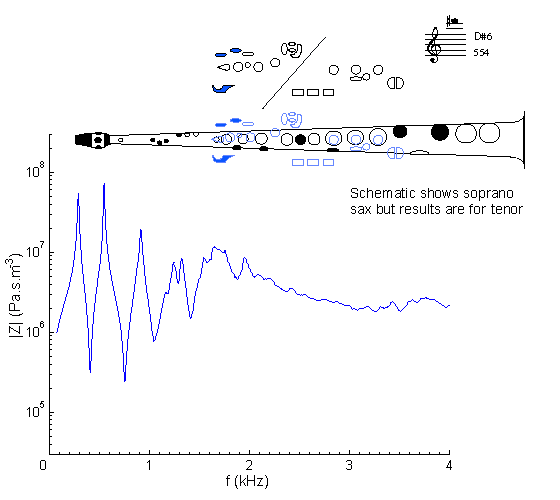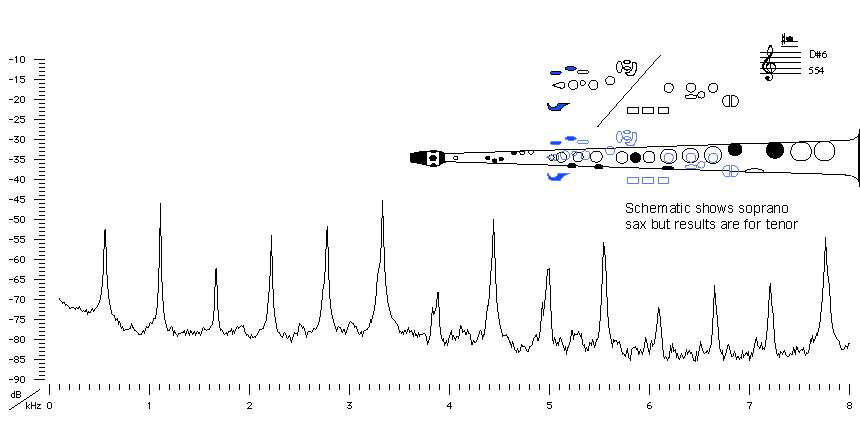| Acoustics of the saxophone |
Bb tenor saxophone |
D#6 |
 |
Fingering Acoustic schematic Non-specialist introduction
to acoustic impedance Notes are the written pitch. |
This note is still in the second register – it plays at the second peak on the impedance spectrum. On most other woodwinds, the corresponding note would lie in the third register, using a resonance related to the third peak of the note G#4. However, that peak falls above the cut-off frequency, which is about 1 kHz, and is too weak (and too sharp).
This fingering uses a register hole. This causes a leak in the bore that weakens the first impedance peak. Above the second peak, the curve is irregular: see the discussion in cut-off frequency.
Compare with the impedance spectrum for a soprano sax on written D#6: same fingering but sounding one octave higher.

Sound spectrum
of a Bb tenor saxophone
played using fingering for D#6.
For more explanation, see
Introduction to saxophone acoustics.
|
Contact:
Joe Wolfe
/ J.Wolfe@unsw.edu.au |